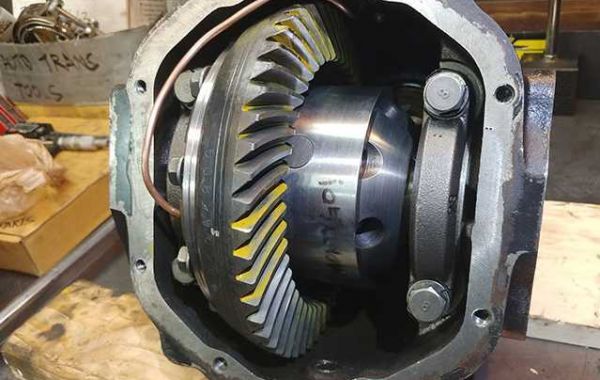You can sugarcoat it anyway you like but the truth is that many of the aftermarket 4X4 mods we spend our days fawning over are designed to improve the way our vehicle does two things – maintains traction and overcomes obstacles.
This is also true of a locking differential, but there is a key choice we all need to make when deciding on a locking differential – Air lockers or E-lockers?
But to understand why either choice might be right for you and your vehicle, we first need to break down exactly what locking differentials do.
What is a locking differential?
A differential is a system that allows both wheels on an axle to turn at different speeds. The vast majority of road cars will be equipped with open differentials, which are fine for conventional driving – but will soon land you in hot water when driving off-road.
An open differential works by sending power from the engine to the axle, with the wheels experiencing the least amount of traction receiving the most power.
This is perfectly fine for most two-wheel-drive vehicles but if you end up in a low traction situation with one wheel on the ground and one in the air, all of the power would be sent to the air-bound wheel, leaving you stuck.
A locking differential, meanwhile, sends equal power to both wheels, meaning better traction and performance.
Of course, a locked differential might prove problematic in general road usage as turning is limited when both wheels are turning at the same speed.
However, air lockers and e-lockers are both designed to allow drivers to switch from open to locked either by air pressure or through an electronic switch.
Air or Electronic?
Both differentials achieve the same thing but they have a different way of doing it. An air locker uses pneumatic pressure via a source of on-board compressed air to lock the gears in place. This is generally activated via a switch on the dashboard, with the gears remaining locked together until the pressure is released.
The top benefit of an air locker is that they are almost instantaneous (indeed, top ARB air lockers can engage in less than a second) because there is no need to convert signals to action – it’s essentially the analogue solution.
Electronic locking differentials (or e-lockers), meanwhile, uses an electronic switch to control a set of magnets that pulls two roller cams apart, which then engages pins that push into the side gear – locking the differential. Cosmetically they work similarly to air lockers and don’t require an outside source of power besides the standard 12-volt.
This is the prime advantage of an e-locker, as air lockers require an on-board air compressor to operate. This means e-lockers are significantly more reliable and is why they are the preferred option for many commercial users and manufacturers.
They are, however, slightly less instantaneous than air lockers and some older models can take a few seconds to engage. More modern models 4 pinion e-lockers, meanwhile, are significantly faster.
Making your choice
Ultimately, both locking differential systems will do the trick and as long as the components are of a reasonable quality then you should be satisfied.
Essentially, whether or not you can legitimise an air locking differential depends on what you plan on using your vehicle for.
If split-second engagement is more important to you than reliability then air is the only way to go but for the vast majority of cases you’re probably better off going electric.







